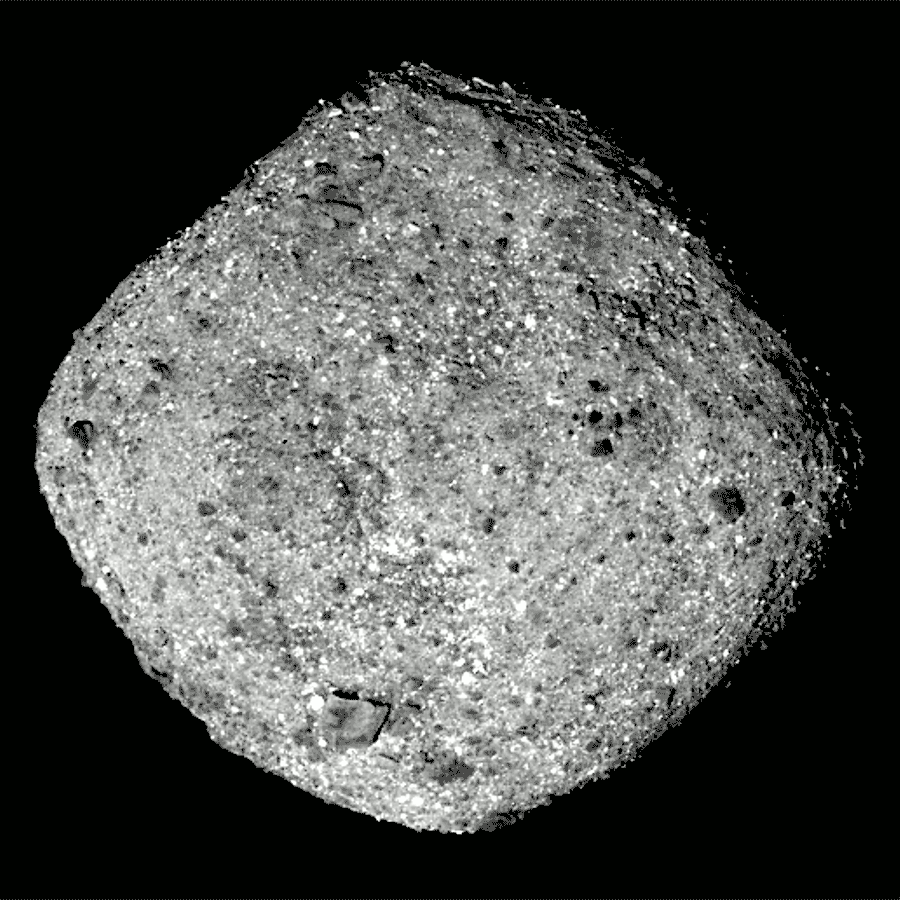After traveling through space for more than two years and over two billion kilometers, NASA’s Origins, Spectral Interpretation, Resource Identification, Security-Regolith Explorer (OSIRIS-REx) spacecraft arrived at its destination, asteroid Bennu, on Monday, Dec. 3, 2018. The spacecraft will spend almost a year surveying the asteroid with five scientific instruments with the goal of selecting a location that is safe and scientifically interesting to collect the sample. OSIRIS-REx will return the sample to Earth in September 2023.
Asteroid Rotation

This series of images taken by the OSIRIS-REx spacecraft shows Bennu in one full rotation from a distance of around 50 miles (80 km). The spacecraft’s PolyCam camera obtained the thirty-six 2.2-millisecond frames over a period of four hours and 18 minutes.
Credits: NASA’s Goddard Space Flight Center/University of Arizona
Bennu Approach Fly In

This picture shows the OSIRIS-REx spacecraft’s view of Bennu during the final phase of its journey to the asteroid. From Aug. 17 through Nov. 27 the spacecraft’s PolyCam camera imaged Bennu almost daily as the spacecraft traveled 1.4 million miles (2.2 million km) toward the asteroid. The final images were obtained from a distance of around 40 miles (65 km). During this period, OSIRIS-REx completed four maneuvers slowing the spacecraft’s velocity from approximately 1,100 mph (491 m/sec) to 0.10 mph (0.04 m/sec) relative to Bennu, which resulted in the slower approach speed at the end of the video.
Credits: NASA’s Goddard Space Flight Center/University of Arizona
Download these videos from Goddard’s Scientific Visualization Studio: https://svs.gsfc.nasa.gov/12318


























